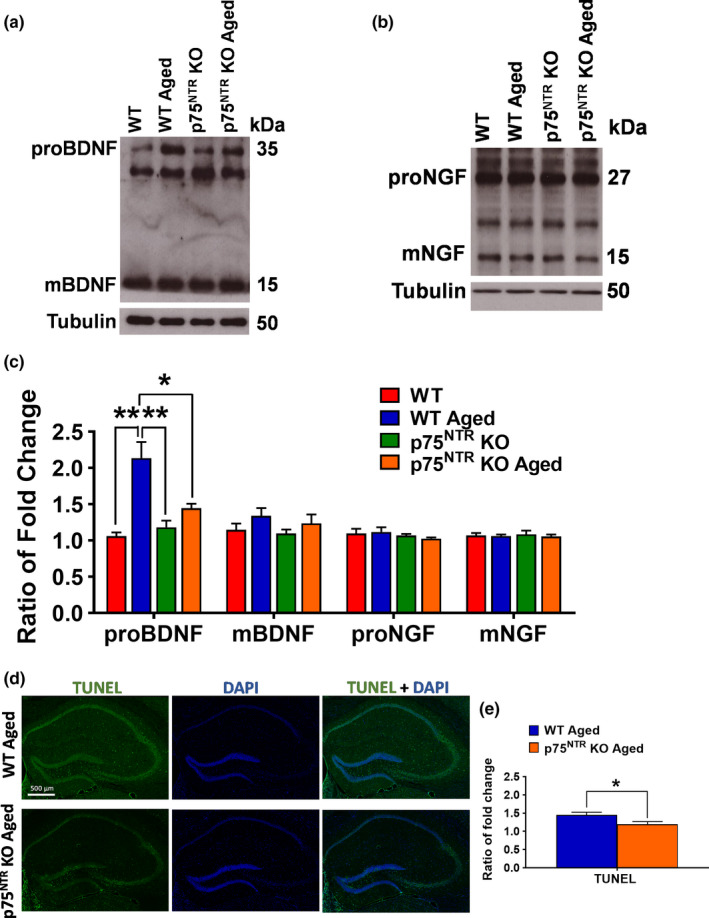FIGURE 9.

Effects of age on BDNF and NGF levels, and apoptosis in the hippocampus. (a) Western blot analysis of hippocampal BDNF levels between young adult and aged from WT and p75NTR KO mice. (b) Western blot analysis of hippocampal NGF levels between young adult and aged from WT and p75NTR KO mice. (c) Ratio of fold change from Western blot. The proBDNF level was significantly increased in aged WT mice compared to young adult WT (p = 0.0060), young adult p75NTR KO (p = 0.0052), and aged p75NTR KO mice (p = 0.0111), N = 4 for each group. No significant difference in mature BDNF level from aged WT mice compared to young adult WT, young adult p75NTR KO, and aged p75NTR KO mice, N = 4, for each group. No significant change in the levels of NGF from aged WT mice compared to young adult WT, young adult p75NTR KO, and aged p75NTR KO mice, N = 3 for each group. The values of the individual groups were calculated in relation to the control group, while tubulin serves as a loading control. Asterisk indicates significant differences between groups (two‐way ANOVA, *p < 0.05, **p < 0.01). Error bars indicate ± SEM. (d) Representative photomicrographs of TUNEL staining (green) and counterstained with DAPI (dark blue) immunohistochemistry in hippocampus of aged WT and p75NTR KO mice. (e) Quantitation of relative immunofluorescence intensity of TUNEL signal was shown as a bar graph. The fold change of TUNEL fluorescence in aged WT mice was significantly higher (p = 0.0336) than aged p75NTR KO mice, N = 3 for each group. Asterisk indicates significant differences between groups (unpaired t‐test, *p < 0.05). Error bars indicate ± SEM
